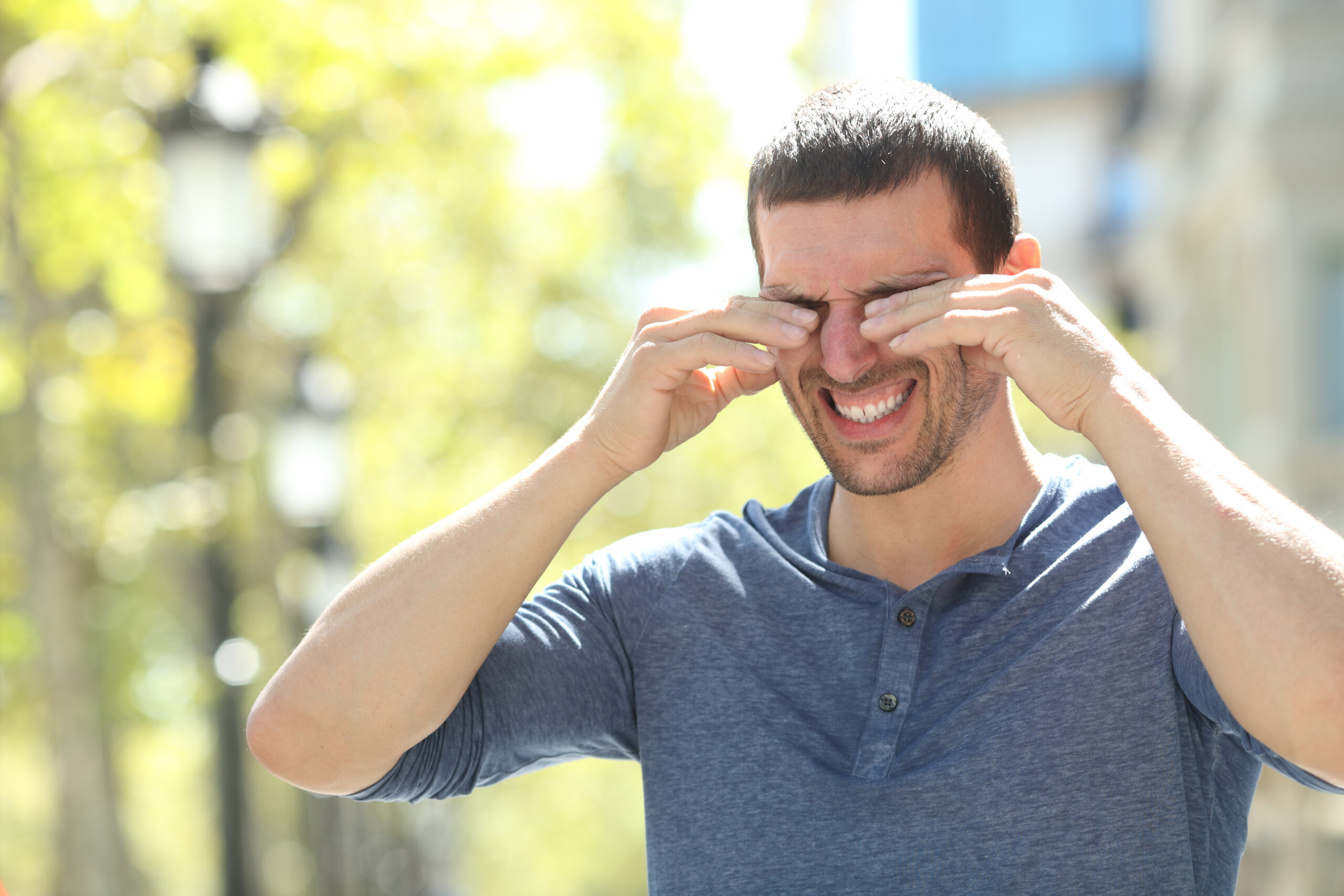Uncategorized
Eye Allergies
Many times during the Spring and Fall seasons, we experience allergic conjunctivitis or eye allergies. These allergies occur when your conjunctiva becomes swollen and inflamed due to irritants or allergens. The conjunctiva is the protective outer covering of the eye and eyelid.
What are the symptoms of eye allergies?
One of the easiest ways to know that you are experiencing eye allergies is when the mast cells that line the conjunctiva release histamine. When exposed to allergens or irritants, they cause the conjunctiva to swell.
Other common symptoms include:
- burning
- red, irritated, teary, and itchy eyes
- swollen eyelids
- blurry vision
- light sensitivity
When the weather is hot and dry, your eyes may also dry out and worsen eye allergy symptoms.
What causes eye allergies?
For allergic conjunctivitis to occur, there needs to be allergens and irritants in the environment. Other triggers might include pollen, mold, dust mites, and pet dander.
Other irritants that cause eye allergies include
- Perfume
- Cigarette smoke
- Contact lenses
- Contact lens solution
- Cosmetics
How can I decrease eye swelling?
Eye swelling and red, itchy eyes with a burning sensation and a clear, watery discharge are prevalent symptoms. When having an allergic reaction, the white blood cells in your eye attach to the protective mast cells in the mucus membranes of the eyes and nasal passages, causing fluid to build up. Then the blood vessels in and around your eyes begin to leak, causing inflammation and swelling. Rubbing or scratching the areas only makes it worse and can lead to infection.
When swelling occurs at night, there is usually exposure to allergens in the bedroom. These irritants primarily include pet dander or dust mites.
What causes the dark circles under the eyes?
When the tissue under the eyes swell, fluid builds up around the eyes, and the blood starts to pool. This buildup causes your skin to darken and creates these dark circles under the eye, which we call “allergic shiners.” These shiners are also a common sign of allergies in the environment, such as pollen, pet dander, dust mites, or it can be a symptom of a food allergy.
If you are experiencing any of these symptoms, consider taking a daily allergy pill or consult your doctor on medications you can take to help reduce your symptoms.

